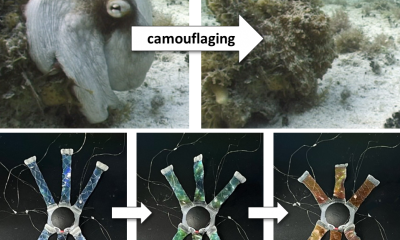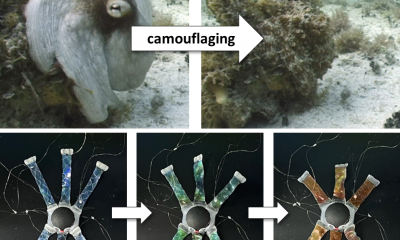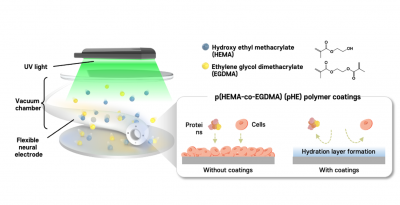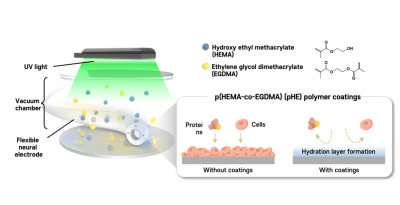Science
KIST Unveils First Ultra-High-Resolution Quantum Sensor Network
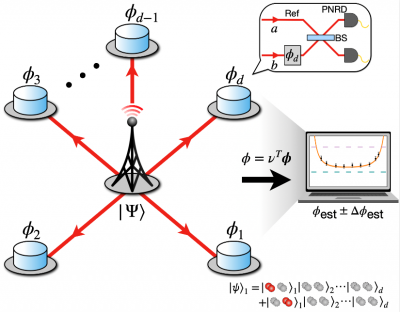
A team led by Dr. Hyang-Tag Lim at the Korea Institute of Science and Technology (KIST) has developed the world’s first ultra-high-resolution distributed quantum sensor network. This groundbreaking technology utilizes a unique quantum-entangled state known as the multi-mode N00N state, significantly enhancing both precision and resolution in sensor applications.
The research, conducted at KIST’s Center for Quantum Technology, marks a significant milestone in the field of quantum sensing. By employing this innovative approach, the team achieved unprecedented levels of measurement accuracy, a notable advancement that could have far-reaching implications across various scientific and industrial sectors.
Breakthrough in Quantum Sensing Technology
The distributed quantum sensor network operates by harnessing the properties of quantum entanglement, which allows for the simultaneous measurement of multiple parameters. This capability is particularly beneficial in environments where high precision is essential, such as in geophysical monitoring, medical imaging, and environmental sensing.
Dr. Lim emphasized the importance of their findings, stating, “Our research demonstrates that by using the multi-mode N00N state, we can not only enhance the resolution of measurements but also improve their accuracy, effectively pushing the boundaries of what is currently achievable in quantum sensing.” This dual enhancement is a significant leap forward in sensor technology, which traditionally struggles to balance precision and resolution.
The research team utilized advanced techniques to create the entangled states necessary for their sensors. The results of this study, published in a leading scientific journal in 2023, have garnered attention from both academia and industry, highlighting the potential applications of this technology.
Implications for Various Industries
The implications of KIST’s findings extend beyond theoretical research. Industries such as telecommunications, healthcare, and environmental science stand to benefit from the improved capabilities offered by this new quantum sensor network. For instance, in telecommunications, enhanced quantum sensors could lead to more reliable data transmission, while in healthcare, they could improve diagnostic imaging techniques.
Furthermore, environmental scientists may utilize these sensors for more accurate monitoring of climate change indicators and natural disasters, allowing for better preparedness and response strategies. The versatility of this technology could usher in a new era of precision measurement tools, providing valuable data for critical decision-making processes.
As the team at KIST continues to refine their technology, the potential for collaboration with various sectors becomes increasingly apparent. The ability to integrate this advanced quantum sensing technology into existing systems could revolutionize how data is collected and analyzed across multiple fields.
In conclusion, the work of Dr. Hyang-Tag Lim and his team at KIST represents a significant advancement in quantum technology. The development of the world’s first ultra-high-resolution distributed quantum sensor network not only showcases the potential of quantum entanglement in practical applications but also sets the stage for future innovations that could transform numerous industries.
-

 Technology5 months ago
Technology5 months agoDiscover the Top 10 Calorie Counting Apps of 2025
-

 Health3 months ago
Health3 months agoBella Hadid Shares Health Update After Treatment for Lyme Disease
-

 Technology1 week ago
Technology1 week agoOpenAI to Implement Age Verification for ChatGPT by December 2025
-

 Health3 months ago
Health3 months agoErin Bates Shares Recovery Update Following Sepsis Complications
-

 Technology4 months ago
Technology4 months agoDiscover How to Reverse Image Search Using ChatGPT Effortlessly
-

 Health3 months ago
Health3 months agoAnalysts Project Stronger Growth for Apple’s iPhone 17 Lineup
-

 Technology3 months ago
Technology3 months agoElectric Moto Influencer Surronster Arrested in Tijuana
-

 Technology1 month ago
Technology1 month agoDiscover 2025’s Top GPUs for Exceptional 4K Gaming Performance
-

 Technology5 months ago
Technology5 months agoMeta Initiates $60B AI Data Center Expansion, Starting in Ohio
-

 Technology5 months ago
Technology5 months agoRecovering a Suspended TikTok Account: A Step-by-Step Guide
-

 Health5 months ago
Health5 months agoTested: Rab Firewall Mountain Jacket Survives Harsh Conditions
-

 Lifestyle5 months ago
Lifestyle5 months agoBelton Family Reunites After Daughter Survives Hill Country Floods

